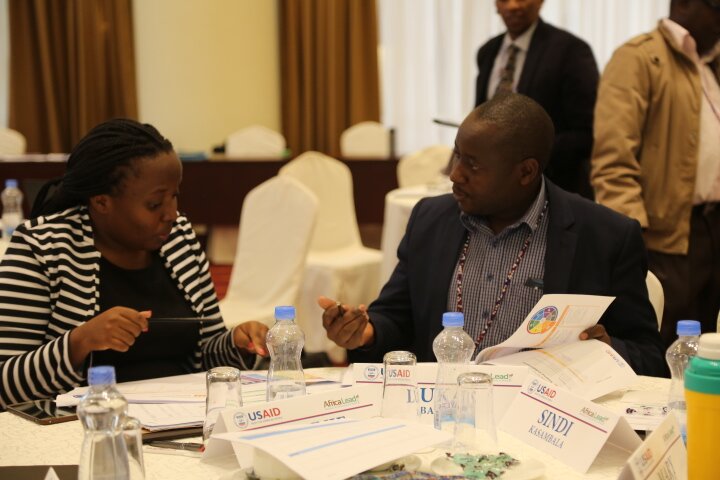Africa Lead facilitated the Monitoring Evaluation and Learning / Collaboration, Learning and Adaptation (MEL/CLA) meeting for USAID/Kenya and East Africa (KEA) regional partners meeting on 22 August 2018 in Nairobi, Kenya. Thirty-five participants, representing five partner organizations, four regional organizations and USAID attended the meeting. The objective of the USAID/KEA MEL/CLA meeting was to provide an opportunity for Office of Economic Growth and Innovation (OEGI) regional implementing partners to reflect on MEL activities in their programs, gain a deeper understanding on the key MEL requirements for USAID, share lessons on cutting edge practices in regional development programming, and come up with solutions for MEL challenges faced by implementing partners.
In his opening remarks, Scott Cameron the Chief Officer for OEGI, challenged partners and the OEGI team to proactively work closely together through joint coordination and planning, including changing the way they work to achieve more effective and impactful programming. He also emphasized the importance of Monitoring and Evaluation as an integral piece of programming and USAID/KEA’s focus on CLA for continuous learning, sharing and improvement among partners.
During the first session, participants reviewed and gained a clear understanding on the key concepts of CLA. Each partner together with their USAID representatives had the opportunity to use the CLA maturity spectrum to reflect on their individual organizations’ maturity. The outcome of this assessment was an action plan on next steps for each organization.
Subsequent sessions emphasized sharing experiences in addressing challenges partner’s face during project design and implementation, best practices in managing evaluations, experiences of USAID and partners on reporting, and reflections on the relationship between programs, M&E and communications in programs.
Additionally, participants discussed creating moments within the life cycles of their activities to pause and reflect, take stock, be open, not force results and discuss programming areas that need adaptation or where the scope agreed was not working with USAID.
USAID mentioned that CLA has been incorporated in all new proposals and this will be the trend going forward. They encouraged partners to think and prioritize on collaborating with the right partners at the right time to promote synergy. USAID also suggested that partners should ensure that the information gathered through collaboration and learning activities is used to make better decisions and program adjustments as needed.
At the end of the meeting, partners agreed that having strong collaboration between programs, M&E and communication are key to effective program delivery. Using the already developed CLA action plans, the partner’s would also identify priorities areas for partnership.
As part of his closing remarks, Luis Tolley of USAID OEGI team, affirmed the need for partner’s to be open and have conversations with their USAID points of contact on programming areas that need change. He also mentioned that the Performance Management Plan (PMP) is a living document that can be changed based on discussions, and that change is necessary to bring results. Overall, discussions from the meeting will be used to improve the quality of documentation and progress reporting towards the realization of USAID OEGI objectives.
